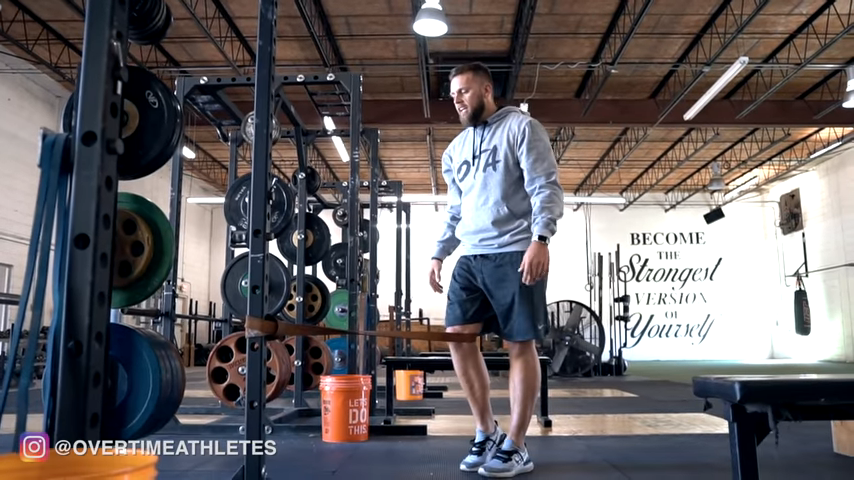Every coach wants their athletes to jump higher, run faster, and move better and none of that matters if their knees can’t handle the load.
When it comes to jump dominant athletes, chronic knee pain and tendon irritation are some of the biggest performance killers. Over the years, I’ve refined a simple blueprint that keeps my athletes powerful and pain free without cutting corners on performance.
Let’s break down exactly how to build stronger, more durable knees through smart programming.
 Build Knee Stability Into the Entire Program
Build Knee Stability Into the Entire Program
Knee health isn’t just about what happens on “leg day.”
At Overtime Athletes, we use every training opportunity even upper body sessions to add elements of knee stability and isometric control.
Here’s what that looks like:
- Decline Step Ups – Load through the full knee range to build quad control.
- Iso Step Downs – Hold positions at multiple joint angles to strengthen tendons and ligaments.
- Reverse Sled Drags – A staple. They train deceleration, knee extension, and blood flow without joint stress.
These movements hit the supporting structures that protect the knee long before we start layering on explosive power work.
 Strengthen the Full Chain (Not Just the Quads)
Strengthen the Full Chain (Not Just the Quads)
Most athletes are quad dominant and that imbalance kills longevity.
The fix: get the hamstrings strong.
Integrate:
- Nordic Hamstring Curls
- Swiss Ball Hamstring Curls
- Band Hamstring Curls
- Machine Hamstring Curls (when available)
The stronger the hamstrings and posterior chain, the more support the knee gets during landings, sprints, and changes of direction.
 Control Jump Volume (Vertical > Horizontal)
Control Jump Volume (Vertical > Horizontal)
This one is huge.
I used to program tons of horizontal jumps such as broad jumps, single leg hops, triple jumps until I realized most athletes were getting crushed by the landing forces.
Here’s why: every time you produce horizontal force, your shin and thigh absorb a ton of shear stress when you decelerate. Multiply that over hundreds of reps per week, and knee pain is almost guaranteed.
Now, I train with a 1:2 ratio. One horizontal jump for every two vertical jumps.
Vertical force development naturally carries over to horizontal performance, without overloading the joint.
 Phase Your Jump Training
Phase Your Jump Training
Don’t skip steps.
In the early off season, we:
- Prioritize stability and strength across the knee joint.
- Use low level horizontal jumps and controlled landings.
Later in the cycle, we:
- Progress to single leg and multi hop variations.
- Gradually increase volume and intensity only after the base is built.
This keeps athletes from breaking down before they’ve built up.
Programming Example
Off Season Progression for Knee Durability:
- Iso Step Downs → Decline Step Ups → Reverse Sled Drags
- Controlled Jumps (Low Level) → Single Leg Broad Jumps → Multi Hop Progressions
- Vertical to Horizontal Ratio = 2:1
Every phase builds on the last: mobility, stability, then power.
Final Thoughts
Bulletproof knees aren’t built from random exercises. They’re built from intentional programming that respects force, position, and progression.
Start slow. Strengthen through range. Control your volume.
Then, when it’s time to explode… your knees will be ready.

 Build Knee Stability Into the Entire Program
Build Knee Stability Into the Entire Program Strengthen the Full Chain (Not Just the Quads)
Strengthen the Full Chain (Not Just the Quads) Control Jump Volume (Vertical > Horizontal)
Control Jump Volume (Vertical > Horizontal) Phase Your Jump Training
Phase Your Jump Training